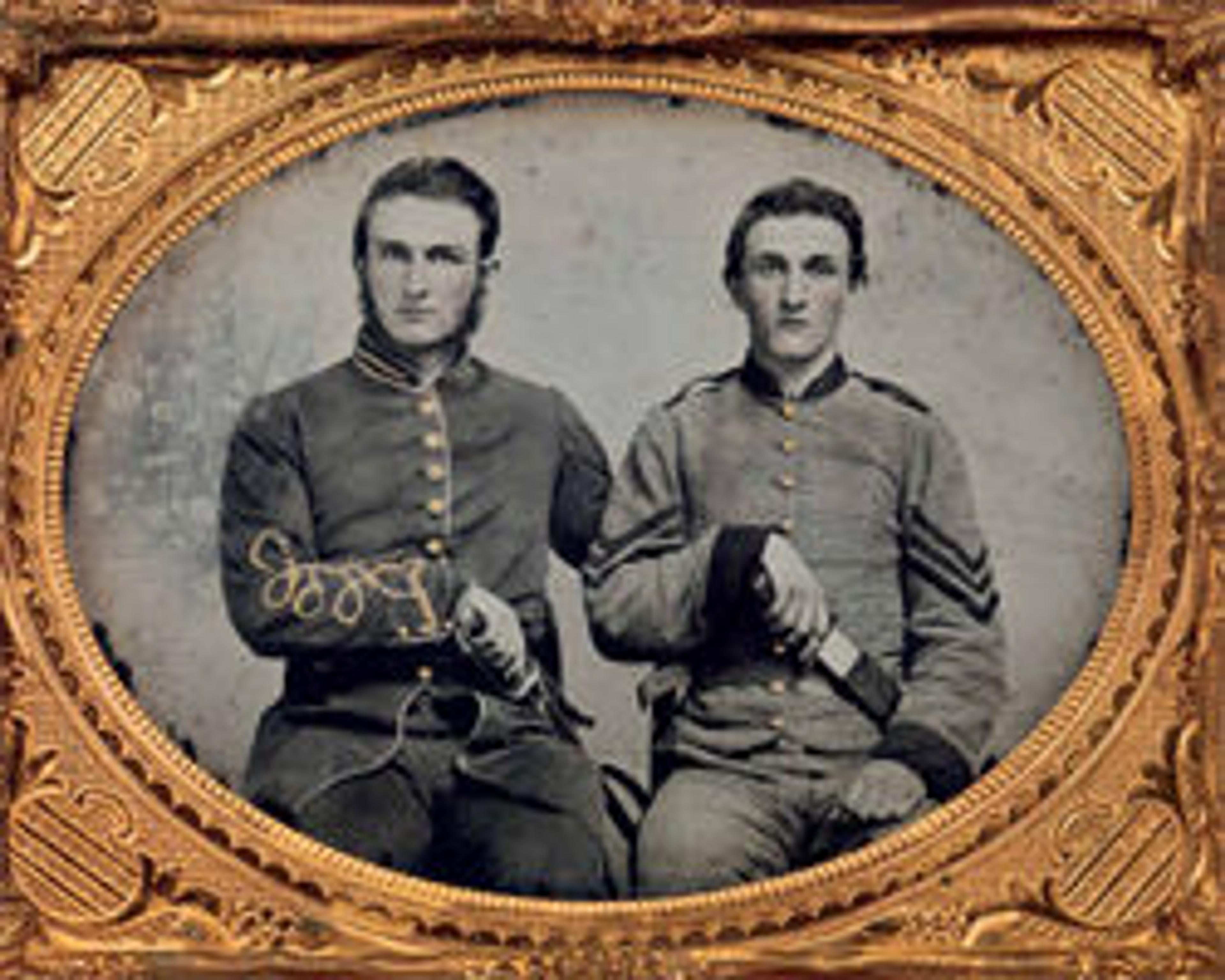Corporal Hiram Warner, Company C, Second United States Sharp Shooters
One day along a small creek in Sharpsburg, Maryland, the Army of Northern Virginia and the Army of the Potomac met; by nightfall some twenty-six thousand Confederate and Union soldiers had been killed, wounded, captured, or gone missing. One of those who died in action at Antietam was Corporal Hiram Warner, a sharpshooter. Born on New Year’s Day, 1833, he was twenty-eight years old and unmarried when he enlisted on April 24, 1861, for three months in Company I of the Eighth Pennsylvania Infantry. After reenlistment he joined the Second United States Sharpshooters. Warner died just after dawn on September 17, 1862, along the Hagerstown Pike in fierce fighting against the Second Louisiana Brigade. What resonates in this sixth-plate tintype is the sitter’s direct stare at the camera and the simplicity of the composition. Warner’s slightly tinted, “sunburned” cheeks and vacant look—as if he has been to the abyss and back—strongly suggest that he has already witnessed firsthand the killing fields. In period jargon, he had “seen the elephant.”
Artwork Details
- Title:Corporal Hiram Warner, Company C, Second United States Sharp Shooters
- Artist:Unknown (American)
- Date:1861–62
- Medium:Tintype
- Dimensions:Plate: 8.9 x 6.4 cm (3 1/2 x 2 1/2 in.)
Case: 9.4 × 8.5 cm (3 11/16 × 3 3/8 in.) - Classification:Photographs
- Credit Line:The Horace W. Goldsmith Foundation Fund, through Joyce and Robert Menschel, 2012
- Object Number:2012.78
- Curatorial Department: Photographs
More Artwork
Research Resources
The Met provides unparalleled resources for research and welcomes an international community of students and scholars. The Met's Open Access API is where creators and researchers can connect to the The Met collection. Open Access data and public domain images are available for unrestricted commercial and noncommercial use without permission or fee.
To request images under copyright and other restrictions, please use this Image Request form.
Feedback
We continue to research and examine historical and cultural context for objects in The Met collection. If you have comments or questions about this object record, please contact us using the form below. The Museum looks forward to receiving your comments.
